Installation view of Refik Anadol ‘Quantum Memories, 2020’ on display in NGV triennial 2020, © Refik Anadol. Image by Tom Ross
Two important questions: what is quantum art; how do you make your art quantum?
After two cups of coffee and fifteen minutes of quiet reflection, I decided to do some quantum art. I’ve got a 2B pencil, charcoal, and a large sheet of cotton paper. How hard can this be? Pretty hard, as it turns out. Setting aside the fact I haven’t done much drawing since high school, I realised I was confronted with two important questions. One: what is quantum art? Two: how do you make your art quantum?
In 1999, an artist’s collective known as The Quantum Aesthetics Group was formed in Granada. Founding artists Maria Caro and Andrés Monteagudo suggest their encounter with quantum physics has enabled “a type of thinking that is free and open to various types of knowledge.” Caro and Monteagudo are part of a broader movement called ‘quantum aesthetics’ which sees itself as a continuation of the trend in art since around 1900 where interrogating, critiquing, and challenging metaphysical certainties became a central thesis. Australian artist Paul Thomas notes that “Expressionism, Cubism, Futurism, Constructivism, Dada and Surrealism all included artists who were looking at questions that pertained to physics, yet did so often without recognizing it.” In Philadelphia, the artistic collective Black Quantum Futurism sees their exploration of quantum physics as more of a re-encounter. Moor Mother Goddess (Camae Ayewa) and Rasheedah Phillips note that quantum conceptions of time and space echo understandings of nature indigenous to the African continent for thousands of years. For Ayewa and Phillips, quantum physics offers a way of breaking down conceptual structures of control and oppression that accompanied and fortified Western colonialism, and provides a pathway to “new models, in order to combat the surreal and horrific that we encounter on a daily basis.”
Right. I pick up the pencil. At this point, I have two options. I can either pursue the quantum aesthetic approach or the Paul Thomas method. Going down the quantum aesthetic path means thinking about the ways in which quantum physics has challenged Newtonian ideas of nature and reality, and using these insights as creative inspiration. For example, Andrés Monteagudo became fascinated with the idea that vacuums are not really ‘empty.’ At the quantum level vacuums are, in fact, full of zero-point energy. This led Monteagudo to think about the relationship between subject and space, and the proposition that no matter what the artist conceives of in space the observer always comes first. So, conceptually, for Monteagudo, there can be no such thing as empty space.
I’m still hesitating. I’m not getting inspired. Perhaps I’m simply no quantum aesthete…
The Paul Thomas approach is a little different. Thomas wants artists to become like quantum physicists. He wants artists to perform quantum-like experiments through their art. This means treating your medium, method, and materials like an apparatus designed to produce expressive and artistic outcomes that challenge conventional understandings or expectations. Thomas invites artists to inject a “new experimentalism in the ways in which we give image to the world so as to inculcate a consciousness of the quantum.” Thomas suggests Marcel Duchamp was experimenting with a kind of uncertainty between wave and measurement in his 1913-14 work, 3 Standard Stoppages. While Martin Creed’s 2000 installation Work No. 227: The Lights Going On and Off is an experiment in light-shifting and spatial dimension.
I cut two vertical rectangles out of a sheet of cardboard and begin throwing my charcoal, trying to get it through one of the holes. After five minutes of my two-slit experiment, I realise I’m not doing art, I’m just making my fingers dirty.
Having cleaned my hands, I put on Spotify – which reminds me… Quantum physicists Volkmar Putz and Karl Svozil used quantum equations derived from quantum computing to quantize an octave of a piano’s C major scale. Using quantum formalism, Putz and Svozil were able to model many “non-classical features available to quantum music, such as coherent superposition of classically distinct tones, tonal entanglement and complementarity.” Of note (excuse the pun), however, Putz and Svozil are keen to emphasise their ‘quantum music’ lacks aesthetic quality and is derived from a “strictly non-artistic” approach. So much the better for me, I suppose.
If notes are to piano as marks are to pencil, I need to find a way of plotting all the possible marks a pencil could make in a ‘paper space’ and then apply the “Deutsch-Turing approach to universal (quantum) computability.” …All the possible marks a pencil could make… who am I kidding? There’s something inherently mathematical in music that simply isn’t the case with sketching.
The formalism of music notwithstanding, Moor Mother shows quantum physics can inspire musical composition without the need for algorithmic simulation. Moor Mother composed Black Quantum Futurism Soundwaves, a soundscape intended to accompany the reading of the 2015 book, Black Quantum Futurism: Theory & Practice. Moor Mother uses “sonic noise and tonal memory to act as a compression of all sounds to both agitate negative and positive vibrations, breaking through the cyclical vortex of oppressed Black identity and consciousness in America.” Track 4, Nonlocality Zine Soundtape, combines a rich conveyance of quantum concepts with conscious cultural aesthetics. Clearly, it is possible to make music that is both quantum and artistic.
Great! Now I feel even worse. Nothing like someone else’s forceful creativity to make you feel inadequate. I look down at the hen scratches on my cotton paper. Maybe frustration, self-pity, and immense concentration can pull me out of this artist cul-de-sac? I snatch up my paper, clench it into a ball, and glare at it menacingly.
Hang about!? If quantum art is about challenging the Newtonian worldview and replacing or complementing this classical perspective with a quantum imaginary, what is a quantum mark? The most primitive form of mark is a point. A point in space? An ‘observable’? The question of ‘observables’ is one of the most pertinent to quantum physics. Philosophers of art, Annarita Angelini and Rossella Lupacchini, remind us that any “physical theory is about observables, but the classical presupposition that observables are made out of objective properties (“beables”) of a physical system is not tenable in quantum theory because its observables can be incompatible.” Furthermore, where am I placing this quantum mark? How do I position the observer in relation to the object? What is quantum perspective? Angelini and Lupacchini point out (another pun) that the Renaissance was structured by perspective, conditioned by Euclidean geometry. They invite us to imagine a “complex space where quantum theory depicts its image of physical reality.”
I reconsider my sad scrunch of paper. I make a mark across one side and another a little further away. I carefully unpick my ball and smooth it flat again. A little flush runs my chest. Is this something? Have I done quantum art? I step back from the table and cock my head to one side.
Nope. This ain’t it chief.
Perhaps the human mind simply can’t articulate quantum art alone? This seems to be what Turkish artist Refik Anadol believes. Anadol is a director, media artist, and “pioneer in the aesthetics of machine intelligence.” Anadol takes massive amounts of data and processes them with the aid of proprietary software and quantum computing to produce utterly original visual compositions. Anadol’s 2020 ‘data sculpture,’ Quantum Memories, leverages around 200 million nature and landscape images and the power of artificial intelligence to generate the visual manifestation of aesthetic probabilism.
I look at the laptop I accidentally placed on an active stove-top last year. The battery’s (literally) fried and it doesn’t work off of main’s power anymore. Not much leveraging going on with a busted-up 2015 MacBook Air.
I’ve tried being inspired by quantum concepts, conducted a quantum-art experiment, challenged my understanding of ‘canvas-space,’ and realised I’m technologically precluded from running any kind of quantum simulation. I’ve got torn paper, broken charcoal, grubby fingers, a shamed laptop, and no quantum art. Am I missing something? Maybe I’m just no artist. What would Niels Bohr say?
Bohr would probably say something like:
“In the great theatre of life, one is always the player and the played, the subject and simultaneously the object of one’s intentions. Since it is impossible to neglect the interaction between the artist and their media in the constitution of an artwork, and impossible to draw a boundary separating artist and art without eliminating a universe of information, it is not a question of quantum art but of quantum appreciation of art. Quantum theory has revealed a problem of artistic knowledge.”
Perfect, this suits me down to the ground! Since I am clearly incapable of producing quantum art, I think I’ll just stick to thinking about thinking about quantum art! In fact, I’ll bet if I suggest the whole issue of quantum art is a problem of quantum appreciation of art, no one will ever ask me to draw anything ever again! Problem (of quantum art) solved.
After a third cup of coffee, something curious occurred to me: the approaches to quantum art are remarkably similar to the spectrum of approaches taken when trying to generate quantum politics – a subject with which I am intimately involved. As a rough taxonomy, we find formalist (directly using the mathematics of quantum), ontological (adopting and employing some quantum interpretation of reality/nature), and epistemological (considering the limits of what ‘can’ be ‘known’ suggested by quantum theory).
Putz and Svozil’s quantum music (using quantum equations to quantize musical notation), and Refik Anadol’s aesthetics of machine intelligence, are analogous to what political behaviourists attempt when they take quantum equations and apply them to problems like voter choice and electoral outcomes. Paul Thomas’s appeal to experimentation, Angelini and Lupacchini’s questioning of classical, metaphysical certainties, and Black Quantum Futurism’s de-colonialism through quantum, present striking similarities to the chorus of political scientists who ask that we uncouple our attachment to Newtonian fixities in international relations like linear causation, the substance-relation binary, arbitrary boundary drawing, and the atomistic conception of states. Finally, the (hypothetical) suggestion by Niels Bohr that the focus should be on a quantum appreciation of art (rather than quantum art per se) is analogous to the work I am currently undertaking, trying to develop a complementary conception of the political.
At the end of the day, the impulse – in the fields of art and social science – is something like this: much of what our discipline is predicated upon, and thus, takes for granted, has been fundamentally disturbed by the revolution in physics that took place in the early twentieth century. Consequently, we expect and, indeed, demand, a similar revolution in our own field.
Exponents of this view have then looked upon the quantum revolution and identified three dominant ‘shifts’ in physics: the shift in mathematics (formalism), the shift in beliefs about ‘what is’ (ontology), and a shift in beliefs about what can be ‘known’ (epistemology). Then, for one reason or another, political thinkers and artists alike have gravitated (and will continue to gravitate) toward the ‘shift’ that most appeals to their personal and professional sensibilities, and pursue that avenue of possible development within their field.
I don’t think it matters a great deal which of these ‘shifts’ an artist or political thinker pursues. What’s more important is that we are pursuing something. I do not doubt that, in time, both art and politics will look and feel quite different, given the irresistible pull of this ‘quantum gravity.’


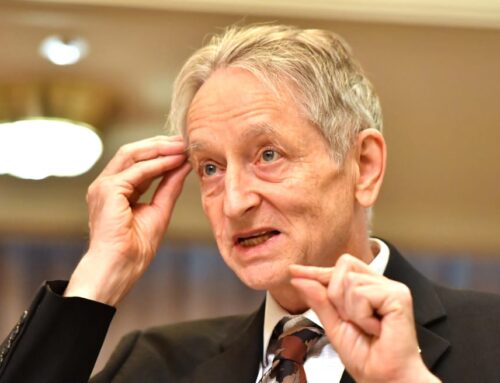
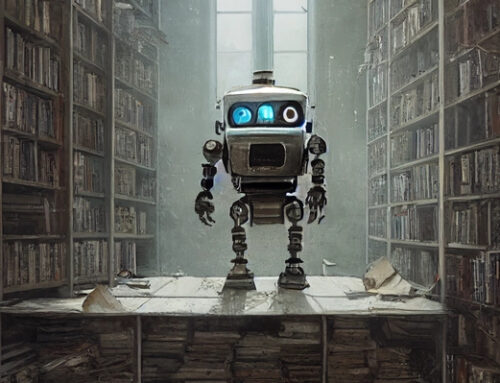
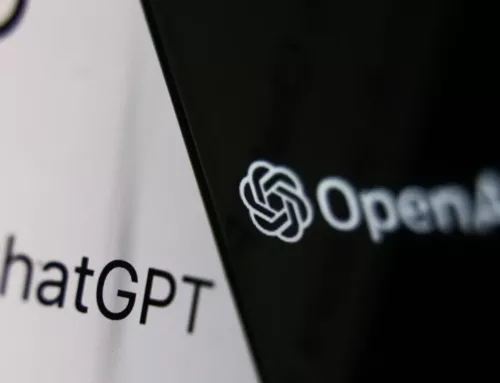
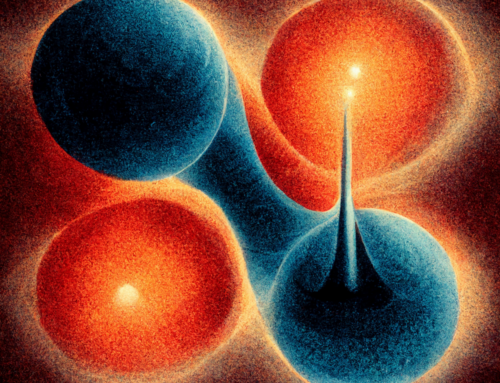
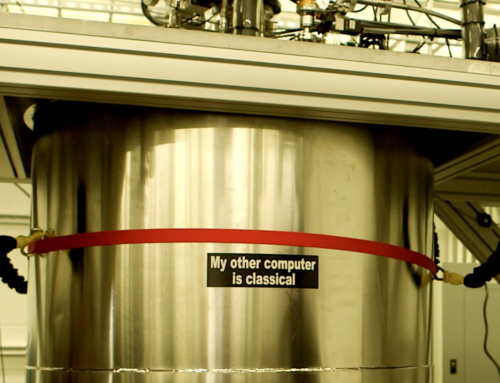
Leave a Reply